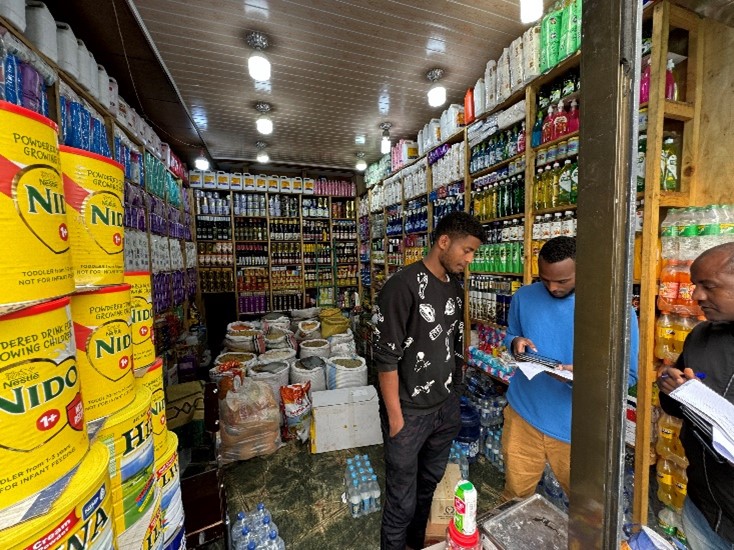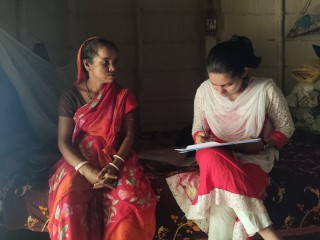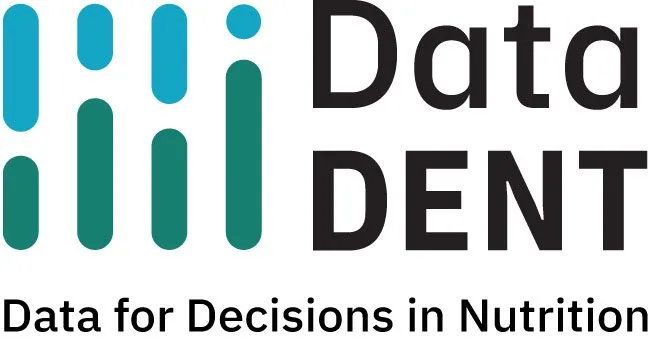Many governments and donors are investing in Large-Scale Food Fortification (LSFF) as a cost-effective strategy for preventing micronutrient deficiencies. However, gaps in data on household-level coverage of LSFF are common for most foods except salt. In a previous blog, we detailed some of the challenges related to measuring who consumes fortified food products. Mainly, fortification is often “invisible” to consumers; they may not know whether they have purchased or consumed fortified foods.
The Fortification Assessment Coverage Toolkit (FACT) survey, first developed by the Global Alliance for Improved Nutrition (GAIN) in 2013, includes three core indicators and questions for household-level measurement of LSFF coverage. Across time, GAIN has tried different ways of wording questions and of carrying out market assessments to identify available fortified products. In 2023, as part of our wider agenda to improve nutrition coverage measurement, DataDENT consulted with GAIN to design formative research and cognitive testing protocols to further refine the FACT tools.

Image 1. Field team member conducting a vendor interview at a retail shop as part of the market landscaping survey. Photo: Samuel Scott (IFPRI), Addis Ababa, June 2024.
Between June and September 2024 DataDENT researchers from the International Food Policy Research Institute (IFPRI) and collaborators from Addis Continental Institute of Public Health (ACIPH) in Ethiopia, and International Centre for Diarrhoeal Disease Research, Bangladesh (icddr,b) conducted two sets of research activities: (1) landscaping of fortified foods available in markets and consumer behaviors related to these foods, and (2) testing survey questions and responses related to household coverage of fortified foods. Fieldwork took place in two districts per country: Dhaka and Sylhet in Bangladesh, and Addis Ketema and Hawassa in Ethiopia. Participants included 108 market vendors (Bangladesh n=52, Ethiopia n=56), 28 program officers (Bangladesh n=16, Ethiopia n=12), and 77 women beneficiaries of social protection programs (Bangladesh n=36, Ethiopia n=41).
Understanding context: market landscape and consumer behaviors
The two country settings had different market landscapes in terms of product diversity and labeling of fortified food products. In Bangladesh, fortification of edible oil and salt is mandatory and fortification of rice and wheat flour is voluntary, while in Ethiopia fortification of wheat flour and salt is mandatory, and fortification of edible oil is voluntary.

Image 2. Field team member interviewing a household respondent about food purchases and fortification coverage. Photo: icddr,b, Sylhet, August 2024.
In Bangladesh, 122 oil brands and 220 rice brands were recorded across shops. Nearly all oil (98%) and most salt packages (88%) displayed fortification statements or logos. However, wheat flour (26%) and rice (12%) rarely carried such labels. In Ethiopia, fewer oil brands were noted (48 total), with fortification labeling observed on 63% of oil samples and on all 26 brands of salt (100%) but not on wheat flour at all (28 brands). These landscaping results were critical for designing our survey questions. In Bangladesh, mandatory fortification policies for edible oil and salt are generally reflected in clear labeling on most of these products, but voluntary fortification policies for rice and wheat flour result in inconsistent labeling, complicating measurement efforts. Similarly, in Ethiopia, mandatory fortification labeling was consistently observed on salt but not on wheat flour, highlighting potential challenges in policy implementation. Recognizing these gaps helped us tailor cognitive interview questions to better capture accurate consumer recall and reporting.
In Bangladesh, 67% of vendors reported selling fortified foods, while in Ethiopia, 82% of vendors did so. However, since vendors were not asked detailed follow-up questions about the nutrients added or their understanding of fortification, we could not reliably confirm the accuracy of their identification. In qualitative interviews, Bangladeshi households reported shared responsibility for food procurement by men and women, while Ethiopian women often made purchases independently. In both countries, consumers did not have a clear understanding of the meaning of fortification, conflating it with general quality or freshness rather than micronutrient enrichment.
Refining existing survey items to measure coverage of fortified foods
Insights from the landscaping phase helped shape the focus of our cognitive testing. Findings revealed inconsistencies in product labeling and limited consumer awareness of fortification logos and packaging. These observations guided us to make refinements to improve clarity and presumably data quality. For example, the FACT survey module asks about several key details: (1) the packaging the product was in when they obtained it, (2) the brand of the product, and (3) the type of shop or source from which it was purchased. Each of these details, if accurately reported, can help with estimating the likelihood of the food being fortified. Collecting and testing food samples is often cost prohibitive.
We found that the concept of “original packaging” was not well understood, with some interpreting it as a shopkeeper’s bag rather than the manufacturer’s sealed container. To address comprehension error, we added a definition of original package to the survey question.
When asked to recall the brand of edible oil most recently purchased, 60% of women in Bangladesh and 82% in Ethiopia were able to report a brand. A validation exercise would be needed to confirm whether the brand reported was the brand purchased. Even if women who were able to recall brand were accurate in their recall, the high percentage of women who could not recall the brand they last purchased implies that estimating coverage of fortified foods based on brand recall would not be possible for all households.
Our formative research identified a list of distinct sources, with definitions, that should apply across diverse contexts with minor adaptations.
What is coming next for our work on LSFF coverage measurement?
Our refined set of FACT survey questions were implemented as part of the One Nutrition Coverage Survey in Bangladesh (see blog). This methods-focused survey provides evidence for how LSFF coverage questions can be integrated into multitopic survey modules such as in the Demographic and Health Survey (DHS), Multiple Indicator Cluster Survey (MICS), or Living Standards Measurement Study (LSMS).
GAIN will reflect DataDENT findings in a forthcoming FACT manual revision. Updated household-level LSFF coverage questions will also be included in DataDENT’s One Nutrition Coverage survey toolkit which will be released in Q4 2025.
For LSFF measurement at household level more efforts are needed to link household survey data with market data and administrative records. Regulatory policies that incentivize clear product packaging and labeling, and reduce repackaging at the point of sale, will facilitate better coverage measurement. We need reliable, simple, and cost-effective ways to measure which households are consuming fortified foods.
